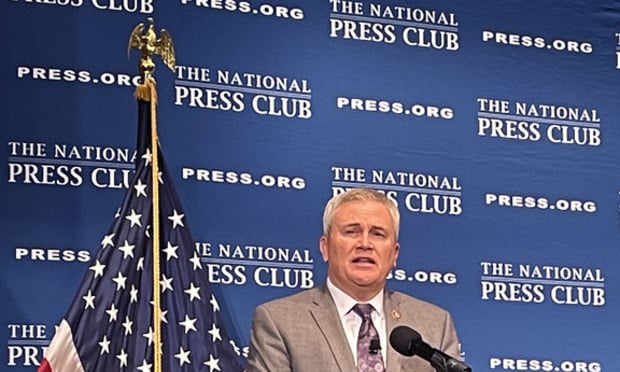The approximately 270,000 members of the Teamsters Central States pension plan facing cuts to promised retirement benefits “put too much faith in the people that we’re supposed to be looking out for us,” according to one witness’s testimony before a Senate Finance Committee hearing this week.
Rita Lewis, the widow of Central States member Butch Lewis, a decorated Vietnam veteran and 40-year teamsters member that recently died from a massive stroke, told lawmakers that members were given no indication their pensions were at risk prior to the passing of the Multiemployer Pension Reform Act of 2014.
Read: California pension fix leads to risk
That controversial law gave trustees of the most critically underfunded multiemployer plans the power to cut promised benefits in order to remain solvent.
The Central States plan is one of three multiemployer plans currently wending through a process administered by the Treasury Department that authorizes pension cuts. Central States is proposing an average pension cut of 23 percent for qualified workers.
But Mrs. Lewis testified that many members are facing cuts up to 70 percent.
MPRA was negotiated behind close doors, said Lewis. “This was dumped on us overnight,” she said. “Some say it is better to get a hair cut today than a beheading tomorrow, but this (law) is a beheading for most of us.”
Sen. Orrin Hatch, R-Utah and Chair of the Senate Finance Committee, called the prospect of pension claw backs, which could potentially affect more than 1 million union members nationwide, “a sobering moment for our country.”
The issue is perhaps most sobering in coal country.
Cecil Roberts, president of the United Mine Workers of America, detailed what ravages the depression in the coal industry has had on not just the pension prospects of the 90,000 members facing cuts, but also the communities in which they live and work.
“This is a desperate time for coal miners,” testified Roberts, who noted that over the decades tens of thousands of union members have died in mines or from conditions resulting from their work.
The United Mine Workers 1974 pension plan has more than 115,000 total participants, with 9.7 inactive participants for every one active member.
Last October, the Department of Labor informed plan trustees and participants that the fund was in “critical and declining” status, making it eligible to apply to make pension cuts to the Treasury Department. DOL said the plan is projected to go insolvent in 2025, but did not say what the plan’s funding status is.
If Congress does not act, 21,000 coal miners will lose their health care by the end of this year, and all will eventually lose retirement benefits, said Roberts, who testified that the plan is expected to be insolvent by as early as 2020.
Should the plan to go insolvent, taxpayers will be on the hook for $4.6 billion, said Roberts.
Moreover, more than $1 billion in commerce is created annually from miners’ retiree benefits. Stifling that source of revenue would crush communities throughout Appalachia that are already struggling to survive, he said.
Josh Gotbaum, former director of the Pension Benefit Guaranty Corp. and a guest scholar at the Brookings Institute, told lawmakers that repealing MPRA, which several proposed pieces of legislation would do, would “guarantee the collapse of the multiemployer system.”
He defended MPRA as the best of bad options, calling the proposed 23 percent cuts by the Central States plan “a tragedy,” but better than the 50 percent cuts that would be suffered if PBGC were to take over the plan.
Worse yet would be if PBGC’s multiemployer insurance program were to go insolvent. Central States retirees would see their pensions cut up to 90 percent under that scenario, said Gotbaum. The agency says the program has a 50 percent chance of going insolvent by 2025.
“MPRA is the best alternative, miserable though it is, because it gives plans a chance to keep benefits about PBGC levels,” said Gotbaum.
He also recommended sponsors in multiemployer plans pay more in premiums to PBGC.
“No one likes to pay higher premiums, but without them PBGC won’t be able to do its job,” he said.
Gotbaum testified that multiemployer premiums are up to 90 percent lower than what sponsors and participants pay outside the multiemployer premium.
But Mr. Roberts said sponsors in the miners’ multiemployer plan would fold if they had to pay higher premiums.
He told lawmakers that premiums have already increased more than 100 percent since 2007. Three large bankruptcies have caused a 40 percent reduction in contributions, said Roberts.
Roberts said the best option is to pass the bipartisan Miners Protection Act, which would cost taxpayers $2.2 billion to protect coal miners’ pensions.
That would be less than the expense to taxpayers if all multiemployer plans projected to go insolvent seek pension cuts through MPRA, said Roberts.
© 2025 ALM Global, LLC, All Rights Reserved. Request academic re-use from www.copyright.com. All other uses, submit a request to [email protected]. For more information visit Asset & Logo Licensing.








